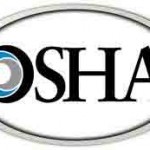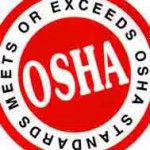Thu 2 Sep 2010
OSHA vs. MSHA vs. State OSHA ?
Posted by admin under ACGIH, Federal OSHA, MSHA, OSHA
Comments Off on OSHA vs. MSHA vs. State OSHA ?
Based upon my previous post, and my reference to MSHA (Mine Safety & Health Administration), I realized I should back up a bit and explain why MSHA matters. The differences of who is regulating the site is subtle, confusing, and terribly important. Given the right cirumstances, all 3 could be at one location with a different boundary-line. And there are others too…
- MSHA– Mine Safety & Health Administration.  It is clear that if you are working in a shaft mine, they are the ones who regulate you. However, the not-clear part is if you own a rock crusher and occasionally decide to crush some rock. MSHA jurisdiction if you sell the rock. If you crush it onsite, and leave it for your own use, then it might be OSHA. In Oregon, most of the MSHA activity is through metal/non-metal surface mines.

- Federal OSHA – Occupational Safety & Heath Administration. Governs anyone who is an employee (who has employees) So what do they do? They enforce, help, govern, provide assistance for employees. In some states, Federal OSHA doesn’t control your state because many states have their own state-run OSHA which does these tasks. Some states without a state-run OSHA are: Idaho, Colorado, Texas. Federal OSHA classifies the ares into regions. (Idaho is region 10) I’m not an attorney, but I’ve heard that if you are an owner (or in some cases there can be multiple owners) and are not paid hourly, and don’t have any employees, OSHA does NOT have jurisdiction.

- State OSHA – (aka Oregon-OSHA, L&I (Labor & Industries -Washington), CAL/OSHA (California), Arizona (Industrial Commission of Arizona) These states (and others) have their own state-run OSHA program. The states are required to adopt the Federal OSHA regulations so they can be “at least as effective as” Federal OSHA. Some states have more-stringent rules. This is fine as long as it is as-protective-as the Federal rules. An interesting fact is that in Oregon there are tribal Indian lands. Even though we have a state-run program, Federal OSHA has jurisdiction if you are working on that land. Another example of this is railroads.
- Others – Now, there may be other rules and regulations depending on where you are working and what substances you are handling. There is the Department of Transportation (DOT). City rules, Housing and Urban Development (HUD).
- Other-Others – To make it more-confusing, these are just the “rules”. There are many, and I would argue, better, resources for the most-protective guidance in employee health & safety. Some of these examples are: American Conference of Governmental Industrial Hygienists (ACGIH), American National Standards Institute (ANSI), and National Institute of Occupational Safety & Heath (NIOSH), among others.
My opinion is the rules should be secondary to this:Â Are your employees safe? If we are protecting them, the rules are only a start.


No Responses to “ OSHA vs. MSHA vs. State OSHA ? ”
Sorry, comments for this entry are closed at this time.